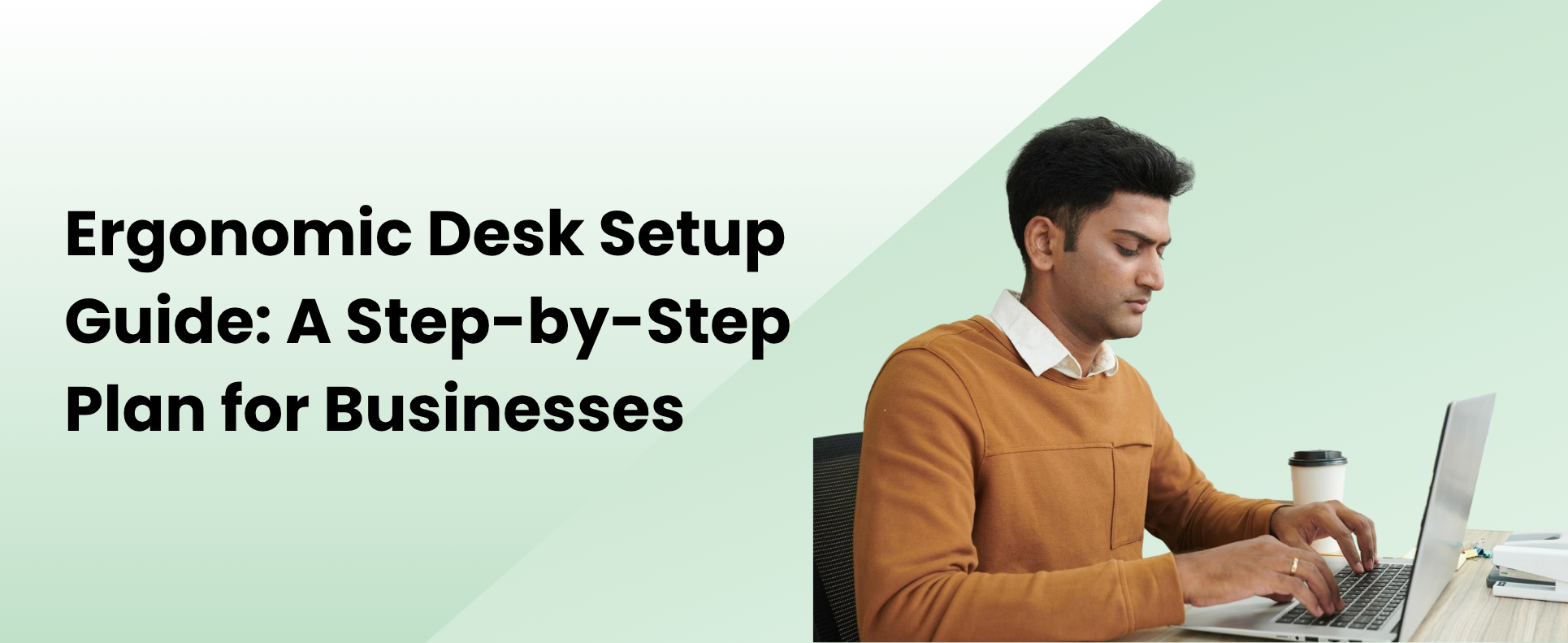05 June, 2025
How Telephysiotherapy Helps Indian Employees Recover from Workplace Injuries Faster

Overview
Why Telehealth Recovery Support Deserves Employer Focus?
India’s workforce today faces a surge in workplace injuries, driven by long sitting hours, repetitive tasks, and a lack of ergonomic infrastructure. Yet recovery often lags due to access gaps and scheduling challenges.
Telehealth-enabled physiotherapy offers a modern solution: remote, guided recovery that supports faster rehabilitation, reduces absenteeism, and ensures safer reintegration, especially for distributed teams. For Indian employers, this approach isn’t only efficient but also a strategic advantage.
Injury Impact
Common Workplace Injuries That Hamper Business Continuity
Workplace injuries in India often go underreported, but their impact is substantial, ranging from lost productivity to workforce disengagement. According to the Journal of Occup Health, musculoskeletal disorders (MSDs) account for 33.8% of all work-related illnesses in India.
Typical injuries include:
- Lower back pain due to prolonged sitting.
- Neck and shoulder strain from poor posture.
- Wrist issues from repetitive tasks (e.g., typing).
- Mobility limitations post-fracture or surgery.
Left untreated, these issues result in long-term workforce disengagement, increased healthcare costs, and attrition
Telehealth Benefits
Why Remote Physiotherapy Makes Business Sense?
With telehealth recovery solutions, employees receive clinical support wherever they are, cutting travel time and improving consistency. Here’s why it works:
- Early intervention: Recovery begins promptly, even during bed rest or limited mobility
- Job-specific customisation: Exercises tailored to work-related strain and motion patterns
- Reduced absenteeism: Therapy fits into work breaks, avoiding full-day leave
- Rural reach: Remote staff gain access to urban specialists
- Improved motivation: Ongoing check-ins help maintain consistency
It also aids mental recovery by reducing isolation and restoring confidence during physical rehab.
Treatable Conditions
Which Injuries Respond Well to Telehealth Physiotherapy?
Not every injury needs a hospital visit. Several common conditions can be effectively managed through virtual recovery protocols:
- Repetitive strain injuries (RSIs).
- Post-surgical mobility issues.
- Office-induced back and neck pain.
- Shoulder impingement and wrist disorders.
- Post-fracture rehabilitation.
These cases benefit from progressive loading, ergonomic correction, and remote guidance, all of which can be delivered via telehealth.
Recovery Process
A Structured Virtual Rehab Journey
Telehealth recovery is more than a video call. It’s a clinically guided pathway:
- Initial Evaluation: Certified physiotherapists assess pain, movement, and posture.
- Custom Plans: Recovery goals align with work responsibilities.
- Live Video Sessions: Real-time therapy with feedback and adjustment.
- Progress Monitoring: Consistent tracking of milestones and feedback loops
- Workstation Coaching: Receive ergonomic advice tailored to your home or office setting.
At BJM Health, these sessions are HIPAA-compliant and available in multiple Indian languages for better accessibility.
Preventing Reinjury
Recovery: Long-Term Risk Reduction
Telehealth physiotherapy isn’t just for healing—it’s essential for reintegration and prevention. Key proactive strategies include:
- Posture correction and ergonomic coaching.
- Fatigue management and load balancing.
- Gradual return-to-work planning.
- Movement retraining to avoid compensatory strain.
- Monitoring high-risk roles for early signs of breakdown.
This helps employers avoid recurring absenteeism and expensive medical claims.
Final Thoughts
Digital Physiotherapy Is the New Business-Ready Rehab
Workplace recovery no longer has to be slow, fragmented, or costly. Telehealth-based physiotherapy, when integrated well, offers a scalable, fast-track model that supports both employee wellbeing and business continuity. For Indian organisations looking to minimise injury-related disruptions, this isn’t a trend—it’s a practical investment in human capital.
Trusted Recovery with BJM Health
BJM Health helps Indian employers bring structured, therapist-led recovery to their workforce. Our virtual physiotherapy programs are backed by clinical expertise, ergonomic insights, and a measurable return on investment (ROI). From recovery planning to return-to-work, we make health accessible, secure, affordable, and remote.
Related Blogs
Seated Isometric Supination Press Relieve wrist and forearm strain with this simple seated isometric exercise. Duration: 2–3 mins Target Audience: Office/IT workers Goal: Wrist and forearm relief [...]
06 June, 2025 How Telehealth Can Enhance Employee Benefits & Improve Workplace Productivity? Overview Digital Healthcare as a Core Employee Benefit Telehealth is no [...]
05 June, 2025 How Telephysiotherapy Helps Indian Employees Recover from Workplace Injuries Faster Overview Why Telehealth Recovery Support Deserves Employer Focus? India’s workforce today [...]
02 June, 2025 Ergonomic Desk Setup Guide: A Step-by-Step Plan for Businesses Overview Why Desks Matter More Than You Think? In the modern Indian [...]





